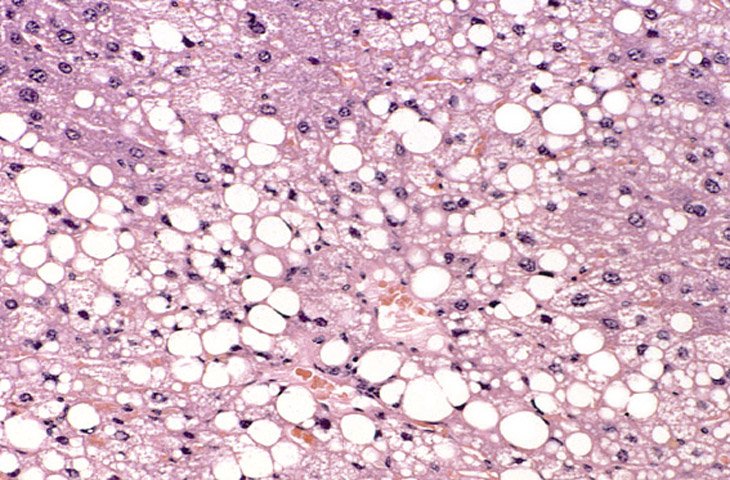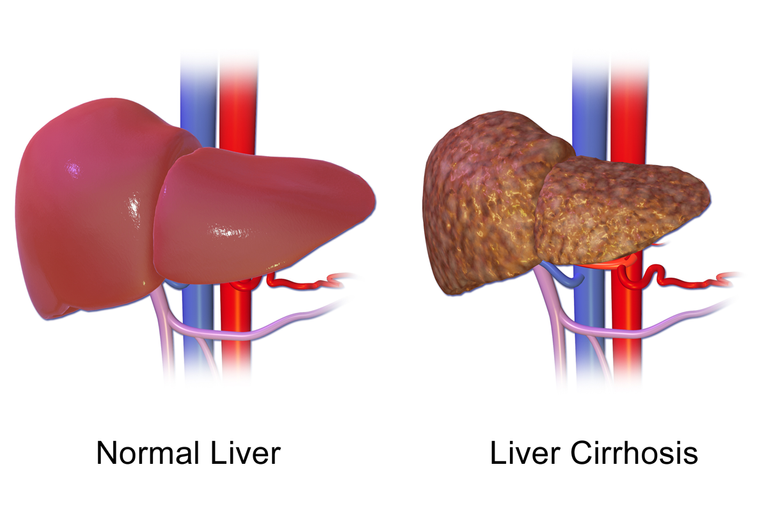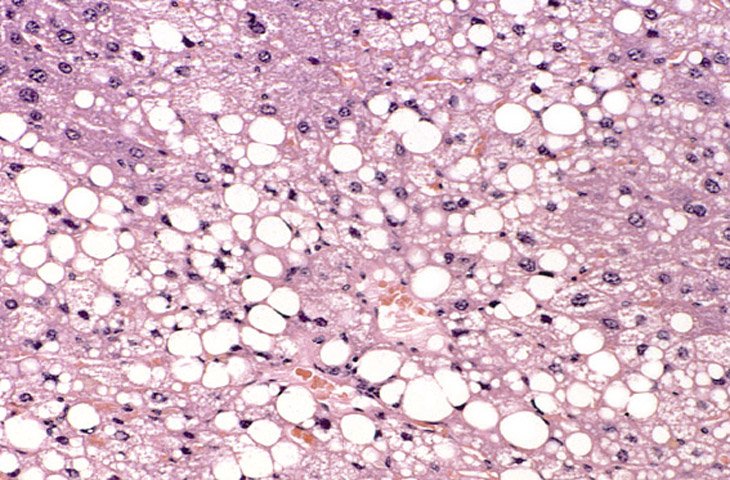Alcohol and human body / Alcol e corpo umano
Effects of alcohol

Ethanol (CH3CH2OH) is a very simple substance, which needs to be metabolized to be disposed of by our body.
hepatic.
Prolonged and assiduous use of the substance, as well as sporadic but consistent use, can
cause significant health consequences.
Alcoholic Intoxication
Alcohol intoxication can be acute or chronic.
Acute intoxication occurs predominantly at the level of the SNC, where for doses of less than 300mg/dl of ethanol there are
psychotropic effects characterized by logorrhoea, hyperactivity, loss of inhibitory brakes.
At higher blood levels, cortical neurons and therefore lower medullary centers are depressed, including those regulating the
breathing, resulting in a risk of ethyl coma.
Chronic intoxication causes effects both in the CNS (amnesia, delirium, withdrawal syndrome and activity depression) and in the brain.
brain), both at the SNP level causing neuropathies that cause tremors.
In addition, alcohol predisposes to clinical manifestations such as gastritis and ulcers at the stomach level.
tends not to eat properly because alcohol, being a high-calorie substance, suppresses the sense of hunger.
Chronic alcoholism leads to malnutrition and nutritional deficits, in particular of the B vitamins, among the
such as thiamine (vitamin B1), whose deficiency is related to nerve symptoms, such as encaphalopathy of the
Wernicke.
In addition, the resulting hypoprotein diet lacks buffering power over stomach acidity, the increase in which results in
the development of ulcers and gastritis.
A hepatic level an accumulation of ethanol causes steatosis as the first clinical manifestation, which consists of
in the accumulation of lipids in the form of vacuoles in the hepatocytes, and consequently the liver is more enlarged, but with less function. In more advanced cases of steatosis, the vacuole can occupy up to 90% of the cell volume;
in this situation the cell structures are under stress, despite which the liver is able to maintain a minimum of function.

Liver steatosis is determined by the hepatic catabolism of ethanol.
In the liver, most of the alcohol in the blood is transformed into acetaldehyde or by three enzymatic systems consisting of alcohol dehydrogenase (ADH), microsomal ethanol-oxidant system (MEOS) and catalase.
The induction of the microsomal system by alcohol explains the increased susceptibility of alcoholics to other compounds metabolized by the same enzymatic system.
Acetaldehyde produced by alcohol metabolism through ADH or MEOS is converted to acetate by aldehyde dehydrogenase. (ALDH). Acetate is then converted to acetate CoA: it is either used in the Krebs cycle, or it is used for the synthesis of fatty acids (which accumulate in the liver) or ketone bodies, which are released into the circulation, together with acetaldehyde and in excess, with toxic effects.
At the level of the liver tissue instead, the accumulation of fats, the toxic action of acetic acid and acetaldehyde causes necrosis
cellular hepatocytes, which release lytic enzymes that amplify the process, leading to tissue necrosis.
Tissue necrosis subsequently leads to cirrhosis of the liver, characterized by connective tissue deposition, and finally to the
Hepatic fibrosis: the liver is reduced in size and irreversibly loses its function. In the cirrhotic liver in fact
present regeneration mouths that represent the liver's attempt to repair the damage with intense
proliferation. However, as they cannot stem the damage, these phenomena will hesitate in a deposit of connective tissue that determines
the stage of hepatic fibrosis. Liver fibrosis is then the cause of liver failure.

Finally, at the medullar level, alcohol and its forms of transformation, resulting in platelets, leukopenia and
anemia
Clinical manifestations of a chronic ethylist
The clinical manifestations that occur in a chronic ethylist are manifold:
- Itter: because because of liver failure, the liver can't dispose of the heme group; it's like this.
accumulated the bilirubin that gives the patient a yellowish look.

Effetti dell'alcol

L'etanolo (CH3CH2OH) è una sostanza molto semplice, che per essere smaltita dal nostro corpo necessita di metabolizzazione
epatica.
Un uso prolungato nel tempo e assiduo della sostanza, oltre che un uso sporadico ma consistente, possano
provocare conseguenze rilevanti per la salute.
Intossicazione Alcolica
L’intossicazione da alcol può essere acuta o cronica
L’intossicazione acuta si manifesta prevalentemente a livello del SNC, in cui per dosi inferiori a 300mg/dl di etanolo si hanno
effetti psicotropi caratterizzati da logorrea, iperattività, perdita dei freni inibitori.
A livelli ematici maggiori, neuroni corticali e quindi i centri midollari inferiori vengono depressi, inclusi quelli che regolano la
respirazione, con conseguente rischio di coma etilico.
L’intossicazione cronica causa effetti sia a livello del SNC (amnesia, delirio, sindrome di astinenza e depressione dell’attività
cerebrale), sia a livello del SNP causando neuropatie che determinano tremori.
A livello dello stomaco, inoltre, l'alcol predispone a manifestazioni cliniche come gastriti e ulcere: l’etilista cronico
tende a non nutrirsi adeguatamene perché l’alcol, essendo una sostanza ipercalorica, sopprime il senso di fame.
L’alcolismo cronico porta a malnutrizione e deficit nutrizionali, in particolare delle vitamine del gruppo B, tra le
quali la tiamina (vitamina B1), la cui carenza è correlata a sintomatologie nervose, come l’encafalopatia del
Wernicke.
Inoltre, la dieta ipoproteica che ne consegue manca di potere tampone sull’acidità dello stomaco, il cui aumento determina
l’instaurarsi di ulcere e gastriti.
A livello epatico un accumulo di etanolo provoca come prima manifestazione clinica la steatosi, che consiste
nell'accumulo di lipidi sotto forma di vacuoli negli epatociti, e di conseguenza il fegato risulta più ingrossato, ma con un minor funzionalità. Nei casi più avanzati di steatosi, il vacuolo può occupare fino al 90% del volume cellulare;
in tale situazione le strutture cellulari sono sottoposte a uno stress, nonostante il quale il fegato riesce a mantenere un minimo di funzionalità.

La steatosi epatica è determinata dal catabolismo epatico dell’etanolo.
Nel fegato, La maggior parte dell'alcool nel sangue viene trasformata in acetaldeide o a opera di tre sistemi enzimatici costituiti da alcool deidrogenasi (ADH), sistema microsomale etanolo-ossidante (MEOS) e catalasi.
L’induzione del sistema microsomale da parte dell’alcool spiega l’aumentata suscettibilità degli alcolisti ad altri composti metabolizzati dallo stesso sistema enzimatico.
L’acetaldeide prodotta dal metabolismo dell’alcool attraverso l'ADH o il MEOS viene convertita ad acetato dall'aldeide deidrogenasi. (ALDH). L’acetato viene poi convertito in acetil CoA: esso o viene utilizzato nel ciclo di Krebs, oppure viene utilizzato per la sintesi di acidi grassi (che si accumulano nel fegato) o di corpi chetonici, che vengono rilasciati in circolo,insieme all’acetaldeide e in eccesso, con effetti tossici.
A livello del tessuto epatico invece, l’accumulo dei grassi, l’azione tossica di acido acetico e acetaldeide determina necrosi
cellulare degli epatociti, i quali liberano enzimi litici che amplificano il processo, portando alla necrosi tissutale.
Le necrosi tissutale conduce successivamente alla cirrosi epatica, caratterizzata dalla deposizione connettivale e infine alla
fibrosi epatica: il fegato si riduce di dimensioni e perde irreversibilmente le sue funzionalità. Nel fegato cirrotico infatti si
presentano dei foci di rigenerazione che rappresentano il tentativo del fegato di rimediare al danno con intensa
proliferazione. Non potendo però arginare il danno, questi fenomeni esiteranno in un deposito di connettivo che determina
lo stadio di fibrosi epatica. La fibrosa epatica è poi causa di insufficienza epatica.

Infine, a livello midollare, l’alcol e le sue forme di trasformazione, determinando piastrinopenia, leucopenia e
anemia
Manifestazioni cliniche di un etilista cronico
Le manifestazioni cliniche che si presentano in un etilista cronico sono molteplici:
- Ittero: in quanto a causa dell’insufficienza epatica, il fegato non riesce a smaltire il gruppo eme; viene così
accumulata la bilirubina che dà al paziente un aspetto giallastro.

Ecchimosi: principalmente a livello delle articolazioni. I movimenti comuni diventano dei microtraumi sufficienti
per determinare emorragie non riparate. Tale diatesi emorragica è dovuta alla carenza di fibrinogeno indotta
dall’insufficienza epatica e della piastrinopeniaCaput medusae: è causato da una stasi della vena porta, diretta conseguenza del deficit di funzionalità epatica
Essa determina un aumento della pressione idrostatica a monte e a valle di questa. Il primo effetto dell’ipertensione
portale è un’intensa trasudazione con accumulo di liquidi poveri di proteine (ascite). Parte dell’ipertensione si sfoga
in questo modo, ma ciò non è sufficiente.
Se il sangue non riesce ad arrivare al fegato cerca altre vie per circolare, e le trova nei sistemi collaterali. I circoli
collaterali interessati sono quelli addominali ed esofagei, che essendo poco utilizzati, non hanno la solidità dei
circoli normalmente in funzione: vanno incontro a rottura determinando varici esofagee, che sono aggravate
dall’ipocoagulabilità tipica dell’etilista cronico.
- Epatocarcinoma: il fegato di un etilista cronico cerca di arginare il danno causato dall’alcol costituendo dei foci di
rigenerazione, all’interno dei quali le cellule proliferano velocemente. Questa è una situazione predisponente
all’epatocarcinoma, in quanto aumenta la possibilità di errori durante le mitosi.
Fonti/Sources
Immagini/Pictures
Un bel post, utile e ricco di informazioni. Spesso si considera l'abuso di alcol come il "meno dannoso" tra tutti i "vizi" e invece non è così.
Bravo davvero @riccc96
!BEER
!DERANGED
!MARLIANS
!trdo
View or trade
BEER.Hey @riccc96, here is a little bit of
BEERfrom @libertycrypto27 for you. Enjoy it!Learn how to earn FREE BEER each day by staking.
lol
Congratulations @riccc96! You have completed the following achievement on the Steem blockchain and have been rewarded with new badge(s) :
You can view your badges on your Steem Board and compare to others on the Steem Ranking
If you no longer want to receive notifications, reply to this comment with the word
STOPTo support your work, I also upvoted your post!
Questo post è stato condiviso e votato all'interno del discord del team curatori di discovery-it.
This post was shared and voted inside the discord by the curators team of discovery-it
Hello!
This post has been manually curated, resteemed
and gifted with some virtually delicious cake
from the @helpiecake curation team!
Much love to you from all of us at @helpie!
Keep up the great work!
Manually curated by @phage93.
@helpie is a Community Witness.
This post has been voted on by the SteemSTEM curation team and voting trail. It is elligible for support from @curie and @minnowbooster.
If you appreciate the work we are doing, then consider supporting our witness @stem.witness. Additional witness support to the curie witness would be appreciated as well.
For additional information please join us on the SteemSTEM discord and to get to know the rest of the community!
Please consider using the steemstem.io app and/or including @steemstem in the list of beneficiaries of this post. This could yield a stronger support from SteemSTEM.